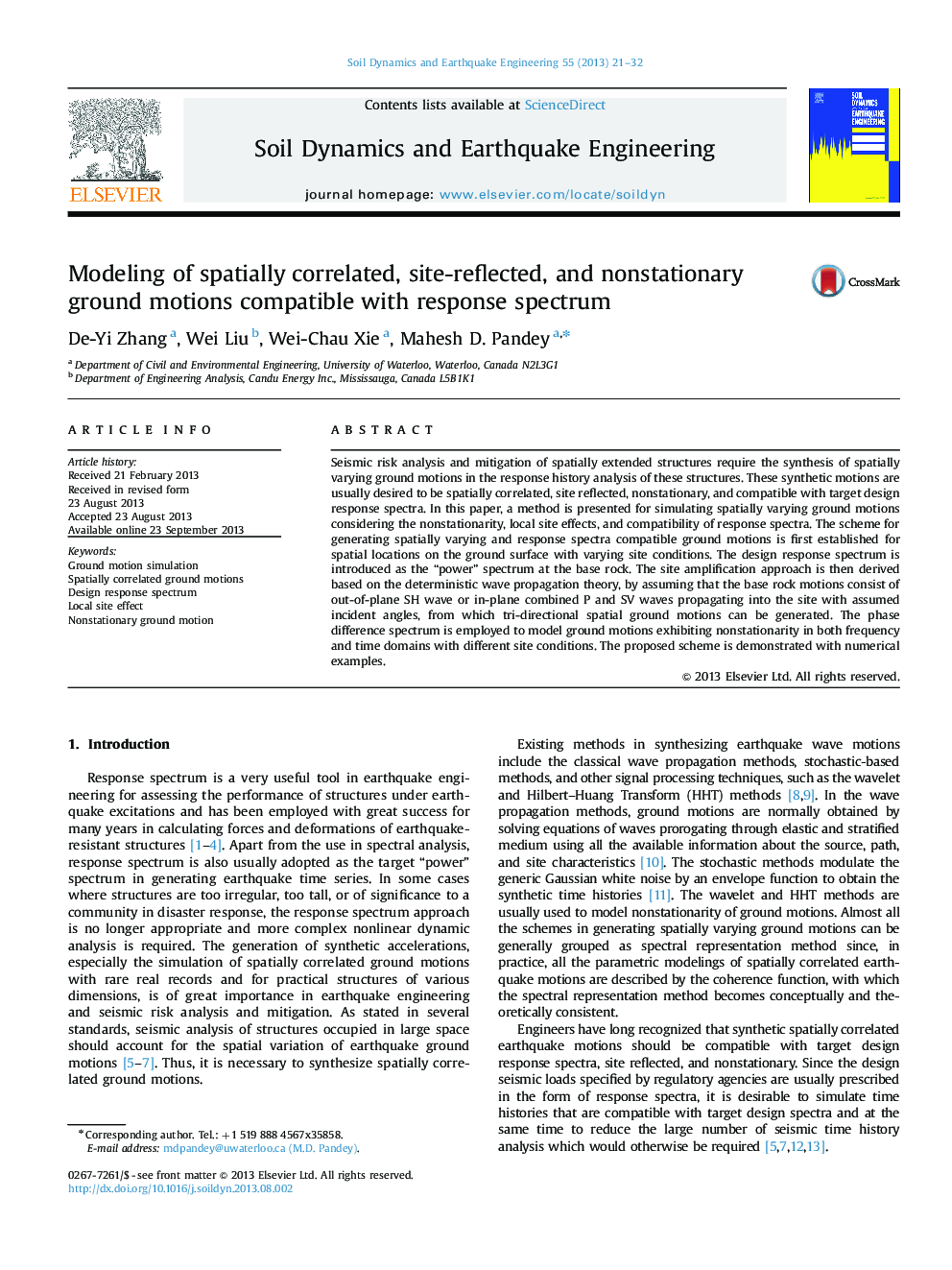| Article ID | Journal | Published Year | Pages | File Type |
|---|---|---|---|---|
| 304159 | Soil Dynamics and Earthquake Engineering | 2013 | 12 Pages |
•Spatial, site-reflected, nonstationary, and spectra-compatible motions are synthesized.•Phase difference method is adopted in modeling nonstationary spatial ground motions.•A scheme in producing tridirectional spatial motions at varying sites is established.•The proposed approach aims for engineering practice in seismic risk analysis.
Seismic risk analysis and mitigation of spatially extended structures require the synthesis of spatially varying ground motions in the response history analysis of these structures. These synthetic motions are usually desired to be spatially correlated, site reflected, nonstationary, and compatible with target design response spectra. In this paper, a method is presented for simulating spatially varying ground motions considering the nonstationarity, local site effects, and compatibility of response spectra. The scheme for generating spatially varying and response spectra compatible ground motions is first established for spatial locations on the ground surface with varying site conditions. The design response spectrum is introduced as the “power” spectrum at the base rock. The site amplification approach is then derived based on the deterministic wave propagation theory, by assuming that the base rock motions consist of out-of-plane SH wave or in-plane combined P and SV waves propagating into the site with assumed incident angles, from which tri-directional spatial ground motions can be generated. The phase difference spectrum is employed to model ground motions exhibiting nonstationarity in both frequency and time domains with different site conditions. The proposed scheme is demonstrated with numerical examples.
